A Cherry tree will stay in your yard for decades, so choosing a plantation site is essential for growing a good Cherry crop every year. Cherry is like relatively hot weather in the growing season. Most Cherry tree branches are widely spread; check your yard space and leave room in the courtyard around it accordingly. Let’s check out how to prepare the soil for Cherry trees below.
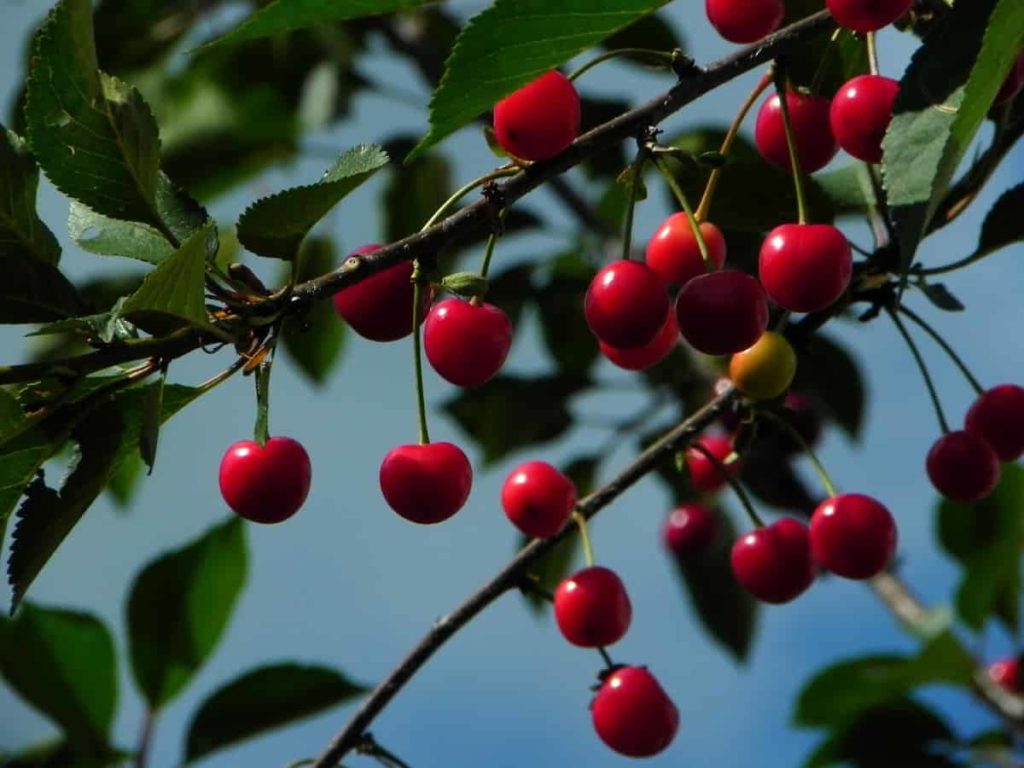
For Cherry trees, the best soil should contain sandy loam, peat moss, bark, pumice, perlite, and other well-draining materials. The rapid drainage caused by a lack of soil and retaining moisture when needed will result in root rot or any other disease caused by excess water. While drainage and maintenance are essential, also soil will provide considerable stability for the roots of your tree.
Cherry trees planted in the ground can be up to forty feet long, but they will only do it if the roots are strong enough to support them. Another important aspect of the Cherry tree’s growth is providing them with the necessary food and nutrients. Trees are living things; like people, their nutritional needs are also specific. Slow-release fertilizer, earthworm casting, fish by-products, and other organic materials in your soil will increase your chances of success with Cherry trees.
You should plant Cherry trees in light sandy soil with moderate fertility and good drainage. You should avoid planting Cherry trees in densely compacted soil as it can lead to root rot and other fungal diseases. If you don’t have the best soil, you can add compost or manure to help improve the soil for Cherry trees.
How to prepare the soil for Cherry trees
Soil pH for Cherry
Make sure to check the pH level of the soil of your Cherry tree. The pH means how acidic something is, and the best soil for Cherry trees should have a pH between 6.0 and 7.0, with 6.5 perfect. Sweet and sour Cherry trees require similar soil, but sweet Cherry trees perform better in soil with more pH and drainage. Sweet Cherry trees will excel in soil which quickly ends and has a pH between 6.3 and 7.2. At the same time, sour Cherry trees can handle dense soils with between 6.0 and 7.0 pH.
Preparation of soil for growing Cherry on grounds
Cherry trees thrive best in fertile sandy soil with good drainage. Before planting a Cherry tree, you should check how well the soil is, and you should also check the soil pH. This will help you what amendments you need to add to the soil before planting your new Cherry tree. Before settling a new Cherry tree in the ground properly prepare the soil and hole. Dig a large hole so all the roots can spread and lie flat.
In case you missed it: 16 Common Cherry Tree Problems: How to Fix Them, Solutions, and Treatment
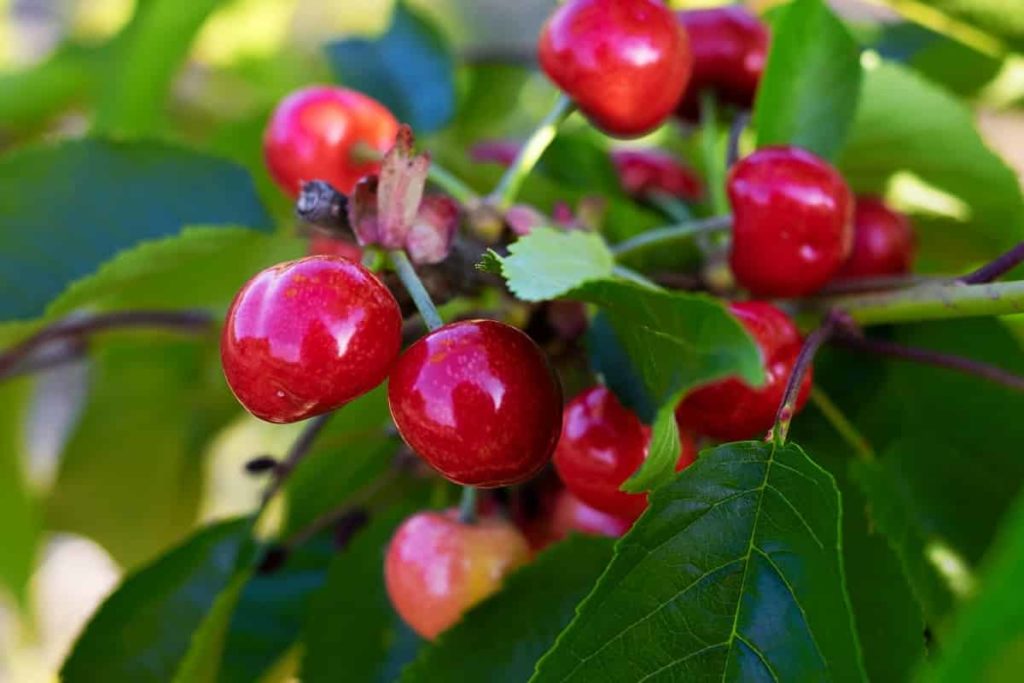
Dig 4 feet down and combine the soil dug from the hole with well-rotten compost. This will increase soil drainage and include a nutrient source in the future when compost breaks down. Remove the rocks, break the soil clumps, and then refill the hole until you can place the tree at the same depth as it has grown in the nursery. Get your soil tested for acidity.
Preparation of soil for growing Cherry in pots
Cherry trees need soil that drains well. Garden soil contains bacteria and organisms that can damage your tree, so don’t use soil directly from the garden. You can make potting soil by mixing equal parts of sand, peat, and bark. This mixture will allow water to drain, providing oxygen and nutrients to the roots. A dwarf Cherry tree will require one cubic yard of soil or potting mix. Spread an inch of gravel under your container to improve drainage.
Then fill it with about half full of potting soil with a pH between 6.2 and 6.8, which is considered a little acidic. Fill within 2 inches of the rim with extra potting soil and gently strengthen it down with your hands. If you need to protect the wooden deck from water loss, place it on the saucer. Once you’re planting your Cherry trees in pots, mulch the soil above to maintain moisture; the plants grown from the container dry up faster than garden plants. Once the tree takes fruit, give it regular water.
Let the tree soak well deep a few times a week depending on the weather conditions to encourage the roots to grow deeper into the pot and prevent fruit from cracking. When fertilizing your Cherry tree, use organic seaweed fertilizer on your container-grown Cherry or organic food for all other purposes. Avoid heavy fertilizers on nitrogen, as it will reveal beautiful, healthy leaves that will not contain fruits.
How to grow Cherry in clay soil
You must improve its drainage and fertility if you live in an area with heavy clay soil. You can add compost and peat moss/coir to improve soil structure. Compost will help break down clay, and this will increase the overall fertility of the soils. First, you’ll need to dig holes for your Cherry tree and mix the compost well into the soil. In most cases, a bag of compost will do, but if you have too heavy clay, you may need to add more compost to the soil.
You can improve drainage of the heavy clay soil by adding peat moss or coir. If you plan to use peat moss, you should be careful as it will reduce your soil pH, although it can be useful if you have very alkaline soil. If your soil pH is already acidic, initially, you should use the coir instead because it won’t change the soil’s pH.
Soil composting for Cherry
Organic matter fertilizer is made from manure or compost and is the safest fertilizer for Cherry trees. Although relatively low in nutrients compared to artificial fertilizers, they can help the growth of the Cherry tree for longer. Organic compounds are also better for soil and can improve its quality. One downside to the organic Cherry tree fertilizer made at home is that you don’t know how many nutrients it contains.
In case you missed it: Best Fertilizer for Cherry Trees: Homemade, Organic, Compost, Liquid, Natural, NPK, Requirements, When and How to Apply
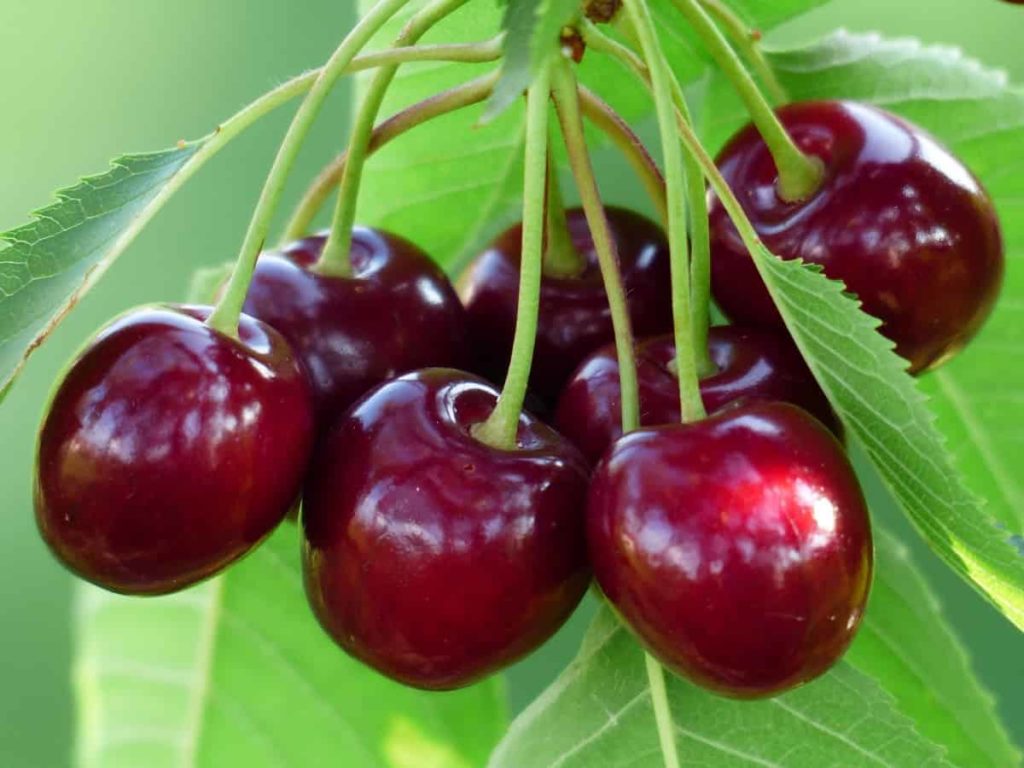
The roots will grow faster if they are in loose soil and there is enough room to spread. Dig a hole deep enough and wide to allow for expansion of the root system. If the soil needs to be loosened, mix the aged cow manure, peat moss, or compost (up to 1/3) into a pile of soil you dig from the hole. Use it to backfill and cover the root system of the plant.
Adding organic matter will improve soil condition in any way by helping to maintain moisture and nutrients and break clay soil so that water can enter and spread roots. The purpose of soil preparation is to give a strong foundation to your fruit tree, give the best chance of survival and create an abundance of fruits, and break down and add nutritious organic matter. In addition, filling up soil-consumed nutrients and minerals is an essential process for the overall health of your tree.
Land preparation for Cherry
Before planting Cherries, the soil should be in a fairly friable state and should be dug well with the application of blood, fish, and bone, the bone meal should be a well-balanced NPK fertilizer. To dig a large enough hole to take root or root ball without cramping, place the tree in the hole so that the top roots are covered with about 2-inch soil. Fill very well with good friable soil and firm.
No air pockets must be left under the soil around the roots. Ensure that the soil you planted equals the surrounding land and that there is no less space where water can accumulate because no newly planted tree likes to sit in the water. When you are satisfied, the new tree gets water if it is too much with a bucket or a hose as a pot-growing tree, or enough to settle the soil around the roots if it is a bare root.
Natural soil amendments for Cherry
Keep the area around the tree weed-free by mulching organic material like straw. Keep the straw away from the stem to avoid rot. You can remove dead, diseased, or broken Cherry tree branches at any time. Once the tree is established and the scaffold branches are evenly divided around the stem, the pruning consists of water sprouts (straight bullets for the central branches) and root suckers (shoots coming from the ground and around the stem).
Fertilize in spring with compost or organic products to overcome any nutrient deficiency based on soil tests. Fertilizers should be applied in the growing season in early or later spring when the flowers are finished, and the tree is out of the leaf. Do not fertilize when blooming. Organic fertilization can be done by applying a single layer of compost, decomposed manure, blood, fish, cottonseed meal, bone meal, rock phosphate, and seaweed meal (for phosphorus, potassium, and trace minerals).
In case you missed it: Cherry Growing Tips, Techniques, Ideas, and Secrets
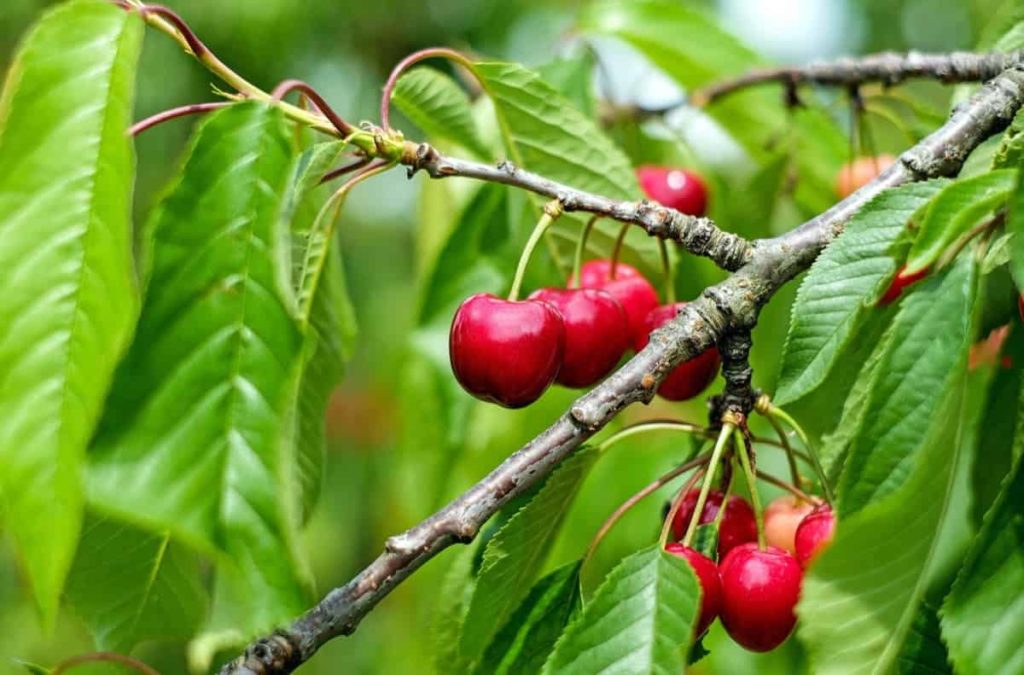
You should spread fertilizer around the tree’s base, start 6 inches away from the stem, spread to the dripline, and water it in the soil. Apply nitrogen fertilizers at the rate of 68 grams of nitrogen per inch of trunk diameter. Compost sits, on average, 1 to 4% nitrogen, depending on the source material. A blood meal is about 13 percent nitrogen by weight.
Best soil mix for Cherry
Most commercial potting soil should be suitable for growing fruit trees. However, a mixture of 1 portion of sand, 1 part of peat, and 1 part of bark or perlite will also serve quite well.
What to do with soil when growing Cherry
The most common companion plants supporting Cherry trees include Marigold, Dandelion, Lavender, and Rosemary. Ideally, companion plants attract pollinators, make healthy soils, repel pests, and are visually appealing. You can plant some plants under the tree depending on their shade tolerance. Marigolds are a great companion plant for Cherry trees as they help manage the populations produced by the soil of nematodes.
You should use Marigolds as a cover crop in areas with high nematodes. Comfrey has a long taproot that breaks the soil and brings nutrients from the lower soil. Comfrey leaves contain high nitrogen content, which makes it great mulch, and it is a trap plant for slugs and other pests, which likes to live within its cool leafy depths rather than other plants in your garden. Comfrey even attracts pollinators with blue-purple flowers.
It makes Comfrey a multipurpose companion plant for Cherry trees. Like Garlic and Onions, Chives also have natural antifungal properties. Since Cherry trees suffer from fungal infections, planting Chives nearby will help in a fungus-free environment. The Chives also bloom in spring and summer with beautiful purple flowers. They are easy to take care of and have a ton of use in the kitchen.
In case you missed it: Growing Cherry Tomatoes At Home – In India
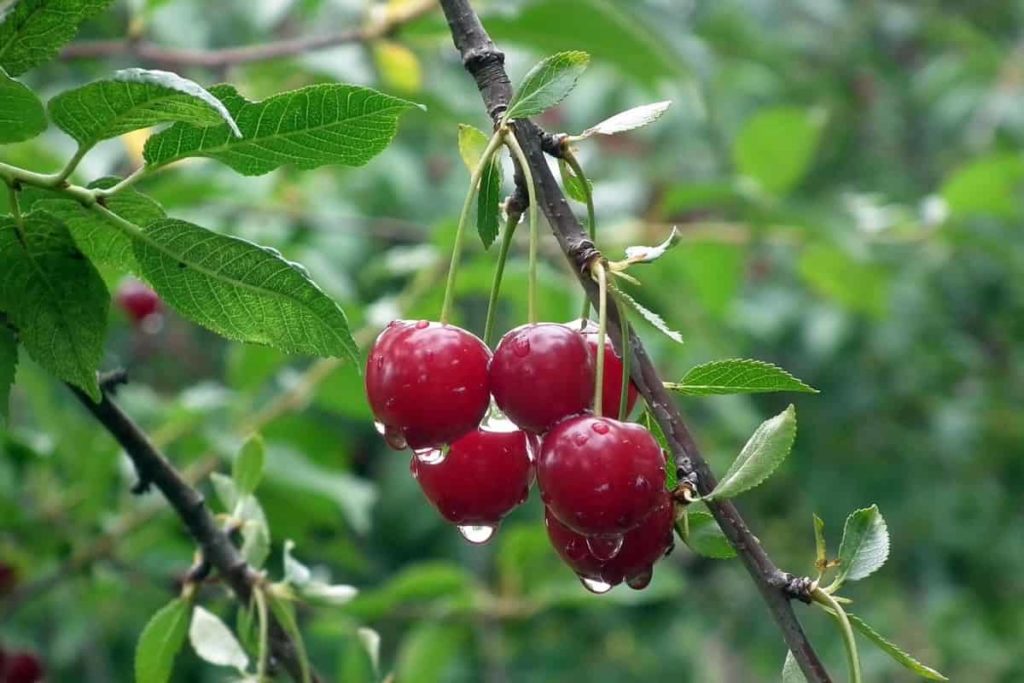
Daises attract green lacewings and assassin bugs, which are highly beneficial insects because their diet consists of all the pests that prefer to live in Cherries and other flowering trees. The Daisies are hard-standing and can live in almost all growing areas, producing lush leaves and large white or yellow flowers. Spring bulbs are planted in autumn, inactive during winter, and flower when spring comes. Some popular spring bulbs are Tulips, Daffodils, Hyacinth, Irises, Allium, and Crocus.
Cherry trees and spring bulbs bloom at about the same time. Therefore, a large plantation of spring bulbs near your Cherry tree will be extremely aesthetic and draw the pollinators early in the season. Nasturtiums are edible, beautiful, fast-growing, and great companions for Cherry trees as they also attract aphids away from the tree. In addition, they come in various colors, and their sand dollar-shaped leaves attract attention. You can interplant Nasturtiums with any plant in this list for extra color and interest in your Cherry tree.
Sweet Alyssum has the best flowers to attract beneficial insects like lacewings and kill pests, parasitic wasps, and bees. These beneficial pests will naturally manage common Cherry tree pests such as oriental fruit moths, tarnished plant bugs, and Cherry fruit flies. Lavender and Rosemary are great companion plants for almost anything, including Cherry trees. They are hardy perennial, and high in resin, meaning their leaves and flowers are usually so tough and oily that they are not interested in pests like deer, rabbits, or squirrels.
Their aromatic purple flowers are always of interest to beneficial insects like flies. Rosemary blooms same time as Cherry trees. This can benefit the pollination of Cherry blossoms. Lavender is known to prevent ticks and fleas because of its strong oil and can even remove mice. Both these plants are like hot, dry conditions, making them good choices for gardens that experience extreme summer heat.
In case you missed it: Growing Cherry Trees In Pots, Containers, Backyard

Conclusion
Choosing the right type goes a long way toward having a successful Cherry crop every year, but soil preparation and planting space are equally important for the health and life of your Cherry tree. Cherry trees are not very fussy regarding cultural requirements, making them a good choice for a home garden or orchard. Whether you grow Cherry trees as a passion, a lot goes into their maintenance and productivity. However, you will provide a solid foundation for their growth by choosing the best soil for Cherry trees. This will help you maximize their growth and thrive in adulthood.
- Flower Garden Designs and Layouts for Beginners
- Planting and Spacing Techniques in Papaya: A Beginner’s Guide
- Growing Gold: Essential Techniques for Planting Pineapples
- How to Make Kalanchoe Plant Bushy: Home Remedies and Solutions
- 11 Reasons Why Your Gardenia is Not Blooming: Home Remedies and Solutions
- Eco Elegance: The Guide to Designing a Drought-Tolerant Landscape
- Gardening on a Slope: Strategies for Hillside Landscaping
- Nourish and Flourish: Top Organic Mulches for Thriving House Plants
- Everything You Want to Know about Indian Mogra Flower: Discover Uses and Growing
- Green Thumb Success: Expert Tips for Cultivating Greenhouse Pumpkins All Year Round
- Maximize Growth & Flavor: The Ultimate Guide to Companion Planting in Herb Gardens
- How to Control Rhododendron Problems Naturally: Home Remedies and Organic Ways to Fix Them
- Natural Magic: The Remarkable Benefits of Cinnamon for Plants
- Best Steps to Revive Dying Tulip with Natural and Organic Treatment
- 10 Reasons Why Your Angel Trumpet is Not Blooming: Remedies and Treatment
- How to Fix Periwinkle Leaf and Flower-Related Problems: Natural Remedies and Solutions
- How to Fix Zinnias Leaf and Flower Problems: Discover Natural and Home Remedies
- Organic Steps to Induce Lemon Tree Flowers: A Comprehensive Guide
- Bloom Booster: Crafting the Perfect Homemade Bougainvillea Fertilizer
- Optimizing Growth: A Guide to Applying NPK Fertilizer for Potted Plants
- 10 Best Homemade Fertilizers for Rubber Plant: DIY Recipes and Application Method
- How to Boost Female Pumpkin Flowers: Effective Steps for More Flowers and High Yields
- Transform Your Indoor Garden: Top Benefits of Pink Salt for Houseplants
- 10 Best Homemade Fertilizers for Peacock Plants (Calathea): Easy DIY Guide
- Unlock Blooms: 9 Reasons Why Your Potted Chrysanthemum is Not Blooming
- 8 Reasons Why Your Potted Hibiscus is Not Blooming: Fix it with Simple Solutions
- Unlock Blooms: 9 Key Reasons Your Potted Frangipani Won’t Flower
- 10 Reasons Why Is My Ice Plant Not Blooming: Remedies and Treatment
- 10 Reasons Why My Potted Hydrangea Not Blooming: Treatment and Remedies
- 10 Reasons Why is My Wisteria Not Blooming: Remedies and Treatment
- 10 Reasons Why is My Goldfish Plant Not Blooming: Remedies and Treatment
- Maximize Your Space: Ultimate Guide to Balcony Gardening with Grow Bags
- 10 Reasons Why Your Iris is Not Blooming: Remedies and Treatment
- 10 Reasons Why Your Anthurium Plant is Not Blooming: Treatment and Remedies
- 10 Reasons Why Your Aquaponic Plants Are Not Flowering: Remedies and Treatment
- 10 Reasons Why Your Agapanthus is Not Flowering: Remedies and Treatment